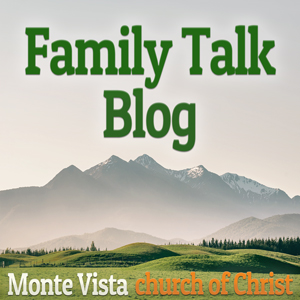We have noted that Eden, The Garden, and Adam are examples of the purity of God’s creation without sin. The garden in Eden, giving sustenance from the tree of life, is a picture of people’s association with God in peace and comfort. When sin entered, God separated the sinners from His perfection (Genesis 3:22-24). When people began to cover the earth but became unruly and very sinful, God chose to destroy them with a flood, and everyone except Noah and his family drowned in the flood (Genesis 6-9). Some of God’s specific commands were given for a particular time or purpose and required instant punishment. The sentence for stealing from the treasures of Jericho had to be carried out (Joshua 7:10-26). And the penalty for touching the Arc of the Covenant was instantaneous with the act “But when they came to the threshing floor of Nacon, Uzzah reached out toward the ark of God and took hold of it, for the oxen nearly upset it. And the anger of the LORD burned against Uzzah, and God struck him down there for his irreverence; and he died there by the ark of God” (2 Samuel 6:6-7). These are examples of the swift, sometimes instant, punishment inflicted upon disobedient servants of God that are found in the Old Testament and show that God expected His word to be obeyed. They emphasized the lesson of God’s sovereignty. The tragedy of sin and the severity of the penalties, compared to God’s love and mercy, highlight the need for a redemptive process to restore people to peace and purity with God. Under the Law of Moses, beginning in Exodus 20, there are provisions for God’s mercy to influence the punishment if the sinner obeyed the requirements of the Law.
God’s love and mercy are shown in the Law of Moses as it reveals how people, separated from God’s chosen people by sin, can be reunited with the congregation of Israel and continue to worship God. The Law specifies washings, sacrifices, and offerings to restore someone who was found unclean or sinful and isolated outside the congregation. The washings, sacrifices, and offerings are types that point to Christ, and the salvation from sin offered to sinners today. We glimpse Jesus’ expectations as He spoke with Nicodemus in John 3. Nicodemus was trying to think of birth by water and The Spirit as a natural or physical event rather than a spiritual one. When he asked Jesus: “How can these things be?” Jesus answered and said to him, “Are you the teacher of Israel and do not understand these things?” (John 3:10). All the types in the Law of Moses pointed to salvation in the sacrifice and cleansing blood of Jesus Christ. As a teacher of the Law, Nicodemus should have made that connection to the Messiah.
The Hebrew writer refers to the washings of the law as “a symbol for the present time…gifts and sacrifices are offered which cannot make the worshiper perfect in conscience, since they relate only to food and drink and various washings, regulations for the body imposed until a time of reformation” (Hebrews 9:9-10). The time of “reformation” means a time of a complete rectification, the time when all people could be restored to the perfect life with God as it had been in the sinless days of Eden. Outside of the usual considerations of health and sanitation, the ceremonial washings of the Old Testament applied to the priests serving the tabernacle and temple and taught the need to clean away the world’s contamination before an individual could serve God acceptably. The dust and dirt picked up by the feet walking between the entrance, and the three features of the court had to be removed so that it would not spread across Holy Ground. The hands, normally occupied with earthly things, needed to be washed before handling the things of God. The words used for washing in both testaments mean washing or purification effected using water. The washing under discussion contrasts with the total body washing of the priest before putting on the priestly garments. They cannot be a type of baptism commanded by Christ because they were applied to the faithful children of God working in His service. Baptism is for those outside God’s family who want to become His children. Washings under the Law were to teach principles that would be explained fully in the continual cleansing offered to the Christian today (Acts 8:22-24); (James 5:16).
Most washings are described in Leviticus, but Exodus and Numbers give practical information on their use and application. We can study them better as they apply to the Tabernacle furniture and the Levitical priests’ service. Washings point out the holiness of God, the sinfulness of man, the need for atonement, and moral excellence that the grace and mercy God wants from all people. The washings demonstrated the removal of sin from the individual, as bathing removed dirt from the body. They pointed to the time when, after Baptism for the remission of sins allowed one to become a child of God, continual cleansing of daily sins would be available through the blood of Christ.
